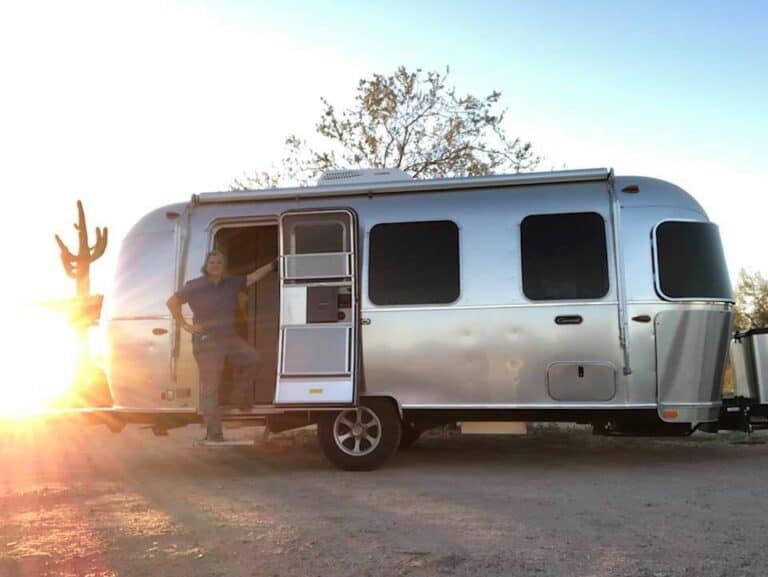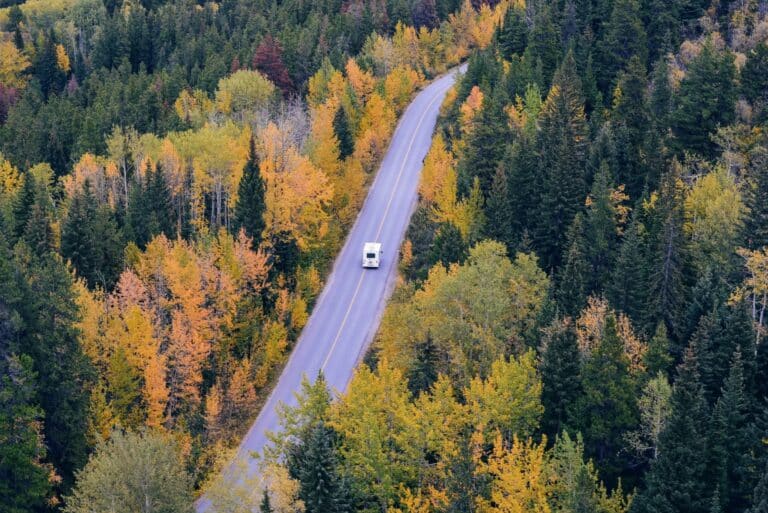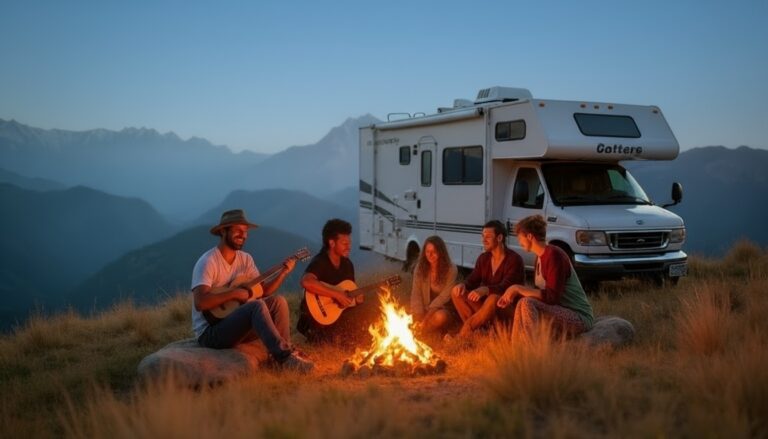RV Living for Beginners: Everything You Need to Know in 2025
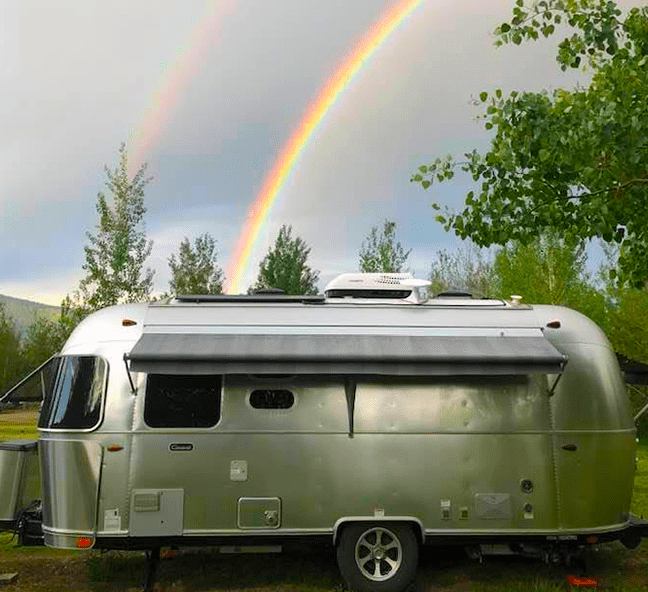
Thinking about hitting the road full-time or just dreaming of weekend adventures in an RV? You’re not alone. Over a million Americans now live on wheels — exploring mountains, coastlines, and small towns with the comfort of home trailing behind them.
When I first set out with my Airstream and two dogs, Wally Boy and Lottie Da, I knew nothing about towing, boondocking, or what size surge protector to buy. But the road is the best teacher — and I’m here to share what I’ve learned to help you start your RV journey with confidence.
By the end of this guide, RV Living for Beginners, you’ll be ready to hit the open road with confidence! So what are you waiting for? Let’s get started!
If you purchase through our partner links, we get paid for the referral at no additional cost to you! For more information, visit my disclosure page.

1. Choosing the Right RV
The first big decision is which kind of RV fits your lifestyle (and budget).
- Class A: Luxury motorhomes, big and beautiful but pricey.
- Class B: Van-style campers, perfect for nimble explorers.
- Class C: A happy medium — more minor, drivable, with extra sleeping space.
- Travel Trailers & Fifth Wheels: Towable options, such as my beloved Airstream, are ideal if you want to set up camp and explore in your truck.
What type and size RV do you need?
Determining the optimal amount of space for your RV lifestyle is a crucial factor in ensuring your travels are as comfortable, convenient, and enjoyable as possible. When it comes to being comfortable on the road, make sure you map out the space you will need for you and your loved ones. Maybe you are flying solo, like me.
Or perhaps you have a partner and maybe kids or dogs, then how much space will they need for sleeping, eating, and lounging? Consider luxuries like bathroom size, wet or dry baths, living area size, and kitchen amenities.
Searching for a Used RV
By January 2021, I was sure of two things: I wanted an Airstream, and I wanted to tow it with a Toyota Tacoma. After weeks of late-night research—asking questions in RV forums, watching YouTube walk-throughs, and studying floor plans—I’d narrowed my choices to a few lightweight models.
A trip to the local Airstream dealer confirmed my instincts but not my patience. New trailers were back-ordered three to five months, so I turned to the used market. The key, I reminded myself, was to stay clear about my goals. Before you buy an RV, think about how you’ll use it—long road trips, weekend getaways, off-grid boondocking—and let that vision guide your decision.
A week later, a friend helping with my search called, voice buzzing with excitement. “I found the perfect one,” she said. “But you have to decide today!” Alarm bells. Acting fast on an RV Trader ad from across the country sounded like a terrible idea. Still, I called the seller.
Ken, it turned out, was as genuine and knowledgeable as they come. The catch? He lived in Texas. I was in California.
After a good conversation and some gut-level reassurance, I took a leap of faith. I booked a flight to Texas with a cashier’s check in hand, met Ken and his wife, and met my future home on wheels—a polished, well-loved Airstream. After a quick run-through and a strong dose of intuition, I handed over the check, received the title, and flew back to California an Airstream owner.

Buying a Used Airstream
Two weeks later, I drove back to Texas in my new Tacoma to tow her home, straight into the historic 2021 Texas Ice Storm. I was stranded in West Texas for five days before the weather cleared, but eventually I made it to Ken’s for my crash course in RV 101.
He patiently walked me through every detail: the weight-distribution hitch, the AGM batteries, the plumbing and waste hoses, the water and propane systems. Until that moment, I had never towed anything.
That afternoon, Ken helped me hitch up, followed me around a few back roads for practice, and waved goodbye. I was officially on the path to owning my dream home. I’ll never forget that feeling—equal parts terror, exhilaration, and pride.
As my friend Peggy likes to say,
“Prepare to make mistakes—and give yourself grace while you learn.”
She’s right. That first drive was the start of a life I’d only imagined—one of motion, simplicity, and endless discovery.

Tips for Buying a Used Airstream (or Any RV)
Buying a used Airstream was one of the best decisions I’ve made, but it came with a learning curve. Here are some lessons and resources to make your own search smoother.
1. Start With Research
Watch YouTube reviews, join Airstream or RV Facebook groups, and browse forums like AirForums.com and iRV2.com. Read about towing capacities and match your tow vehicle first — the trailer should fit your lifestyle and your truck, not the other way around.
2. Search Trusted Marketplaces
Start with reputable platforms like:
- RV Trader — the most extensive nationwide inventory.
- Airstream Marketplace — for verified used listings.
- Facebook Marketplace — good for local finds, but vet sellers carefully.
- Camping World Pre-Owned RVs — certified units with warranties.
3. Inspect Carefully Before Buying
If you can’t do it yourself, consider hiring a mobile RV inspector or a certified technician (costing around $300–$600). They’ll check for:
- Leaks or water damage (especially in corners and seams)
- Roof, seals, and undercarriage
- Appliances, propane system, and electrical connections
- Battery health and tire age
Tip: Anything more than 5 years old usually needs replacement soon.
4. Ask for Records
A well-loved Airstream or RV will come with:
- Maintenance logs and manuals
- Title and registration
- Notes from upgrades or renovations
No paperwork? Proceed with caution.
5. Plan for Upgrades
Even the best-maintained RVs can benefit from personalization — perhaps with the addition of solar panels, new tires, or a composting toilet. Budget 10–15% of your purchase price for improvements once you bring it home.
6. Trust Your Gut
If something feels off — about the deal, the seller, or the rig — walk away. The right one will find you, just as mine did in Texas after a twist of fate (and an ice storm).
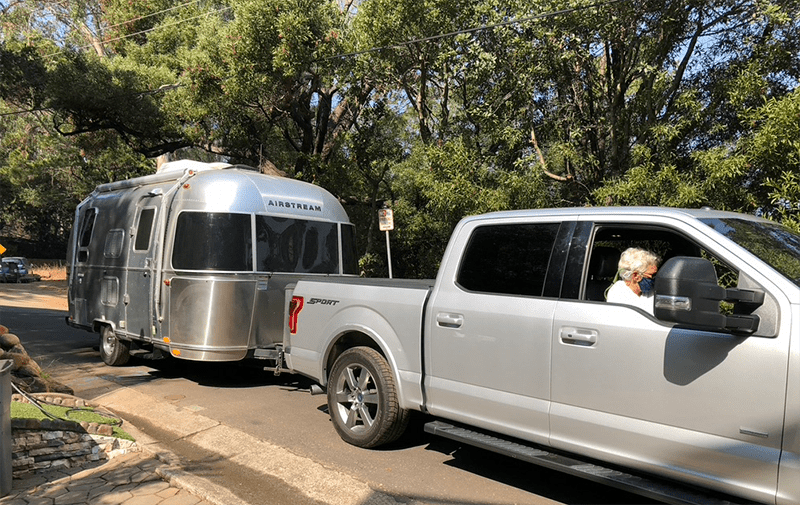
Try Before You Buy: Renting an RV
Before you commit to buying an RV, it’s smart to test drive the lifestyle first. Renting gives you a low-risk way to experience life on the road — from backing into campsites to managing power, water, and waste systems. It’s also a great way to determine what size, floor plan, and amenities truly matter to you (and which ones don’t).
Start with a short weekend trip close to home, then work your way up to a longer journey. Try boondocking off-grid for a night or staying at a full-hookup RV park — each offers a totally different experience.
You can easily find rentals through trusted platforms:
- RVshare – Find the perfect RV rental. A great peer-to-peer rental option that includes insurance and roadside assistance.
- RVezy is a peer-to-peer RV rental platform that serves thousands of hosts and guests across North America. Find your perfect RV rental and save 40% by renting directly from the owner.
- Camping World has an extensive collection of RV gear, as well as RV rentals, available across America.
- Outdoorsy – Think of it as the Airbnb of RVs. You can rent directly from owners and choose from a range of options, including small campervans and luxury fifth wheels.
- Cruise America – Ideal for beginners who want a simple, no-fuss motorhome rental from a professional fleet.
Renting first gives you confidence and clarity — you’ll know what feels right before you invest in your own rig. You might even discover you love the compact simplicity of a Class B camper van or the roomy comfort of a travel trailer. Either way, you’ll head into RV ownership with real experience and fewer surprises down the road.
2. Essential Gear You’ll Actually Use
Don’t fall for every shiny gadget online — focus on safety and comfort first.
- Weight-distribution hitch and Sway Control
- Tire Pressure Monitor: A Must for Road Safety.
- Surge Protector & Power Adapter: Protects your rig’s electrical system.
- In-Line Water Filter: Keeps your tanks clean and drinking water fresh.
- Leveling Blocks: Because waking up crooked isn’t charming.
- Portable Solar Generator: I love Jackery Brand— keeps everything charged off-grid.
Stock up via Amazon RV Essentials or Camping World — many offer bundle deals for first-time buyers.
There are several types of RV water filters that you may want to consider. Some campgrounds and RV parks have high plumbing pressure, so it’s essential to avoid damaging your RV’s plumbing. Water Filters allow you to filter out contaminants and reduce bad taste, odors, sediments, bacteria, and chlorine. I also have a portable Travel Berkey Gravity-Fed water filter, which removes over 200 contaminants.
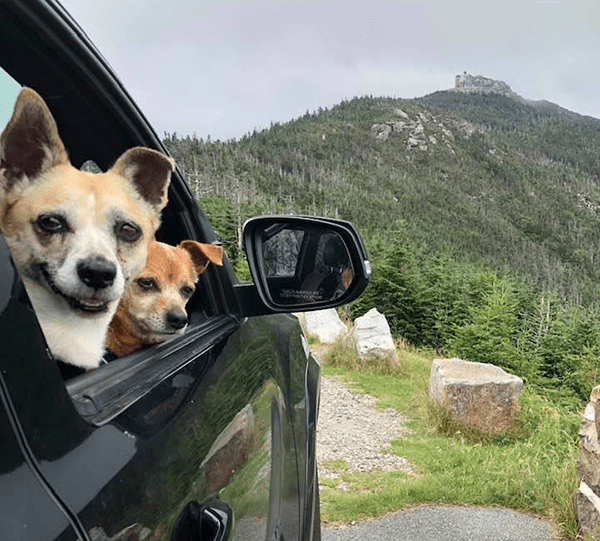
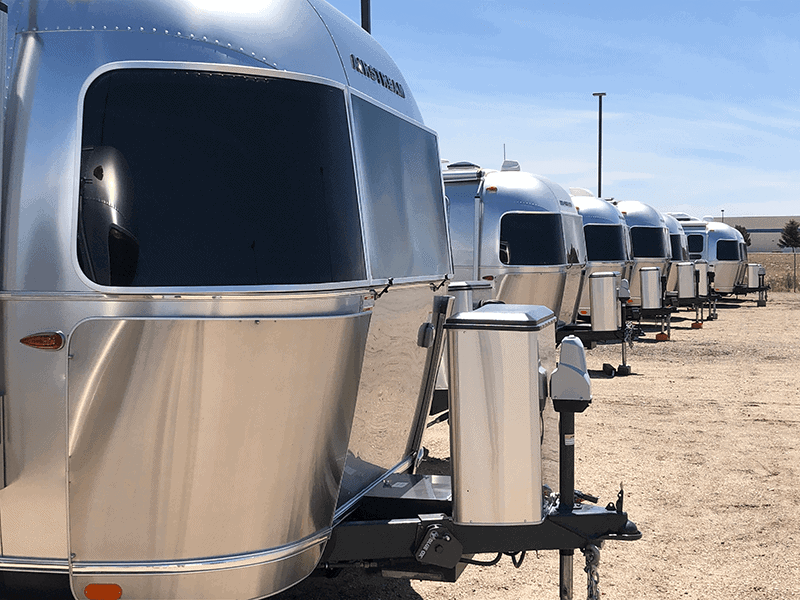
3. Where to Stay: Campgrounds to Dry Camping
There’s a world of camping options out there:
- RV Parks & Resorts: Great for beginners. You’ll get full hookups (water, sewer, electric), showers, and often a community feel.
- State & County Parks: My favorite middle ground — affordable, scenic, and close to nature.
- National Parks: Wonderful places to visit in the off-season camping for a more enjoyable and less crowded experience.
- Boondocking (Dry Camping): Free camping on public lands managed by the Bureau of Land Management (BLM) or National Forest Service. No hookups, but total freedom.
Try Harvest Hosts — it’s my go-to for finding free overnight stays at wineries, farms, and breweries. Pair it with the RV Life App or Campendium for reviews and GPS-friendly routes.

Go through your departure checklist before you leave.
As a solo RVer and RV beginner, it’s good practice to have departure & arrival checklists. There are so many areas to pay attention to that you want to remember an important step. It would be best to start with safety by checking your hitch setup and hazards, ensuring everything is secured both inside & out, and that all your hoses and connections are properly put away.

Choose your Campsite & then Plan Your Route
Depending on the time of year you are traveling and where you are going, ensure you have a campsite booked before hitting the road. Several RV travel apps, such as The Dyrt, AllStays, FreeRoam, and RV Parky might be helpful with your RV trip planning.
Use an RV GPS, such as RV Life, or mobile apps like Roadtrippers Route Planner, to ensure you avoid roads where you may encounter trouble. Google Maps may be great for car travel, but sometimes it can lead you down the wrong path in an RV. Being spontaneous and stopping along the way is fine, but be sure to know where you will park your rig that night.
RV Memberships
As an RV newbie, I found membership sites invaluable for overnight RV camping, discounts, and community. Make reservations ahead of time—popular campgrounds, especially National Parks during prime season, and State Parks book up far in advance. If you plan to stay at RV parks, plan and book well in advance; these campground memberships can help you save.
Harvest Hosts
Harvest Hosts is a membership site for $79/year, which gives you unlimited overnight stays at over 4176+ incredible locations, including farms, wineries, breweries, and attractions.
I loved my Harvest Host farm stays, where I had the opportunity to camp on alpaca farms, maple sugar farms, blueberry farms, and in apple orchards, among other locations.
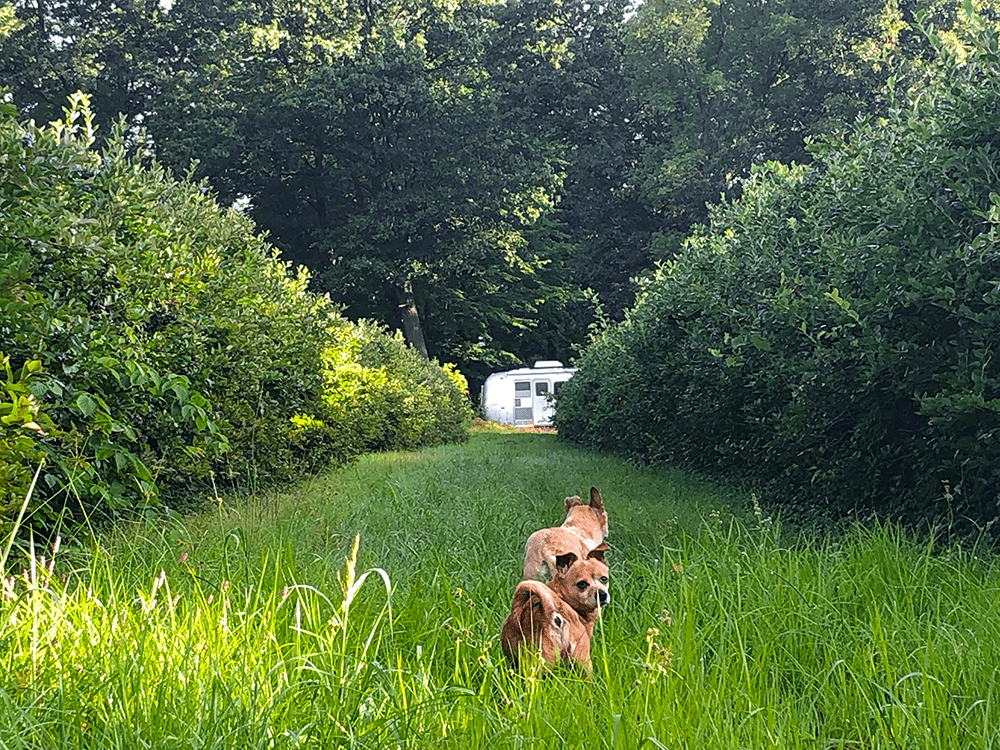

4. Working from the Road
If you’re a digital nomad like me, reliable Wi-Fi is your lifeline.
- Best Wi-Fi Booster from Bearifi
- Nomad Internet: Unlimited Data Wireless Plans for Rvers
- Hotspots: Verizon Wireless Jetpack or AT&T NetGear Nighthawk are the best options for use in remote areas.
- Starlink Roam MiniKit: The game-changer — high-speed internet almost anywhere.
- Campground Wi-Fi: Often unreliable, but good in a pinch.
Establish a daily routine to strike a balance between work and exploration. I plan calls in the morning, then spend afternoons hiking, kayaking, or photographing the golden hour light. It’s a rhythm that keeps life on the road, both productive and peaceful.

5. RV Maintenance Made Simple
Even the best rigs need TLC. Keep it simple with a few core habits:
- Walkaround Checks: Inspect tires, roof seals, and hoses before every drive.
- Tanks & Plumbing: Use biodegradable tank treatments and drain regularly.
- Roof Care: Check seals and clear debris to avoid leaks.
Learn from YouTube pros like RV Geeks, Mortons on the Move, and Keep Your Daydream — their step-by-step tutorials make any repair doable.
Join helpful Facebook groups like:
- Rv Camping Ideas & Hacking
- Full-Time RV Living
- Solo Women RVers
- AirStream Addicts
- RV Lifestyle Group
- BLM RV Camping
The collective knowledge there has saved me thousands of dollars (and headaches).
Ask numerous questions and receive a wealth of advice.
As we all know, there is an endless wealth of information available. Your Google search probably led you here. I found talking to RVers who have gone through the experience to be some of the most valuable resources around.
I interviewed a close friend who had just returned from a year-long trip across the country in her Lance travel trailer and her Ford F-150 truck. We talked for hours about everything from towing to trip planning to membership sites and how to outfit my RV. She also gave me the confidence to learn how to pull a travel trailer and back it up.
Determine your maximum towing capacity.
To determine maximum towing capacity, you will need to know the vehicle manufacturer’s weight ratings and compare them against the gross weight of your trailer. Most vehicles have the trailer towing capacity listed in the owner’s manual, on the driver-side door jamb, or in a trailer towing capacity guide on their website.
Learning how to tow
In addition to your vehicle’s towing capacity, you need to know the weight of your hitch and the weight of your trailer. To be safe, everything needs to work together seamlessly. Here is an excellent towing guide with everything you need to know in RV Life.
To avoid the stress and headaches of towing, I suggest getting a sense of everything you need to do and then practicing. Practice hitching and unhitching, leveling the trailer at the campground, adjusting your mirrors, learning how your brake controller works, and testing your backup camera. My biggest fear was backing up into a campsite by myself. Remember, I was traveling solo, and the pups weren’t much help.

6. Staying Safe — and Sane
Safety is everything when you live on wheels.
- Use weather-alert apps like MyRadar or NOAA Weather to track tornadoes, flash floods, and heat warnings.
- Keep roadside assistance (I recommend Coach-Net or Good Sam) — you’ll thank yourself when a tire blows on a lonely highway.
- Travel with a first-aid kit, an emergency tool kit, and extra drinking water.
And let’s talk about sanity: solitude can be both healing and hard. As a solo traveler, I’ve learned to choose connection. Strike up conversations at campgrounds, ask rangers for their favorite hikes, or invite your neighbor to share a campfire. The road will give back what you put into it — kindness, curiosity, and courage.
Before you hit the road
Check Weather Conditions
This is SO important in this time of climate change. Having been waylaid by the Texas ice storm, a scary thunderstorm in Kansas, and fierce winds in Arizona, I am meticulous about knowing what the weather ahead of me holds. The NOAA Weather App provides amazingly accurate weather information, and I highly recommend adding it to your trip-planning routine.
Travel Slowly & Enjoy the Ride
As a solo traveler pulling a travel trailer, I never go above 60 or 65. Granted, I do have trailers blasting past me, but that’s ok. I’m fine giving them space and me the peace of mind, driving at a comfortable pace. And check out this post, if you have dogs and want to bring them along too
Limit your Daily Drive Time and Use Truck Stops for Pee Breaks
I plan to drive 3-5 hours each day with stops for pee breaks for the pups and at scenic places. I almost always use Google Maps satellite view to see what to expect at gas stations before I pull in, and it shows me which way to pull in my travel trailer and where to pull out safely to get back on the highway.
Try to use a truck stop gas station over a standard gas station whenever possible, as they often have more spacious fueling layouts. Love’s, TA Travel Centers, and Pilot Travel Centers are popular chain versions across the United States. Even if you love driving, don’t push yourself too hard, and you will be happier once you arrive.
Trust Your Gut
If you arrive at a boondocking spot or somewhere that feels right, then trust your gut. Find someone to talk to about safety, such as the campground host or a fellow camper. I’ve not had any bad experiences, and I plan to keep it that way.
Don’t Arrive After Dark
Enough said.

7. RV Budgeting 101
Here’s the truth: RV life can be as thrifty or as fancy as you make it.
Typical monthly expenses:
- Campsites: $0 – $1,000 (boondocking vs. resort stays with hookups)
- Fuel: $300 – $700, depending on mileage and distance
- Maintenance: $50 – $200 set aside monthly
- Insurance: ~$100 – $200
- Connectivity & Subscriptions: $50 – $150 ( Internet, cable, satellite)
Utilize budgeting tools like Wanderlog or TravelSpend to track your spending effectively. You’ll be amazed at how much freedom you can buy by cutting traditional housing costs.

8. Finding Your Tribe
Even if you travel solo, you’re never truly alone.
Join RV communities like:
- Escapees & Xscapers – support for full-timers and working nomads
- Girl Camper or Sisters on the Fly – women empowering women on the road
- Airstream Club International– helps you locate other Airstreamers and rallies
These groups host rallies, skill-shares, and potlucks that feel like family reunions on wheels. Connection keeps this lifestyle sustainable — emotionally and practically.
Escapees RV Club
Xscapers is a community within the Escapees RV Club, created for working-age RVers. This group offers numerous resources, including education, discounts, and events where you can meet other members.
Passport America
Stay at over 1,200+ Quality campgrounds across the United States, Canada, and Mexico at half the nightly rate.
Good Sam Club
Good Sam Club membership starts at $29/year. It is an international organization of RV owners dedicated to making RVing safer and more enjoyable, as well as saving members money through club-endorsed benefits and services.

9. Final Thoughts: Home Is Where You Park It
RV life isn’t about running away; it’s about moving toward something — freedom, simplicity, and the joy of discovering how little we truly need. My little Airstream has carried me through mountain passes, desert storms, and quiet forest mornings. It’s efficient, humble, and perfectly me — like a silver turtle shell that lets me carry my world wherever I go.
If you’re dreaming of life on the road, start small, start curious, but start. Adventure favors the bold — and the well-prepared.
Grab your free “RV Beginner’s Checklist” and take your first step toward your own road-ready life.

You’re Ready to Hit the Road!
Conclusion
As you can see, following your dreams and embarking on a life of adventure is possible with the proper preparation. With this best RVing for beginners guide, you have all the essential information needed to get started in your new and awesome RV lifestyle. Financing your RV, understanding RV systems, and learning how to maintain it are critical components that will help set you up for successful travels in the years to come.
With preparation, research, and a good understanding of whichever RV you choose, you will be well on your way to creating a unique home base for your travels. With time and practice, you’ll soon immerse yourself in your newfound freedom and embark on exciting adventures. Here are some amazing bucket list adventures for you to enjoy!
Safe Travels!

